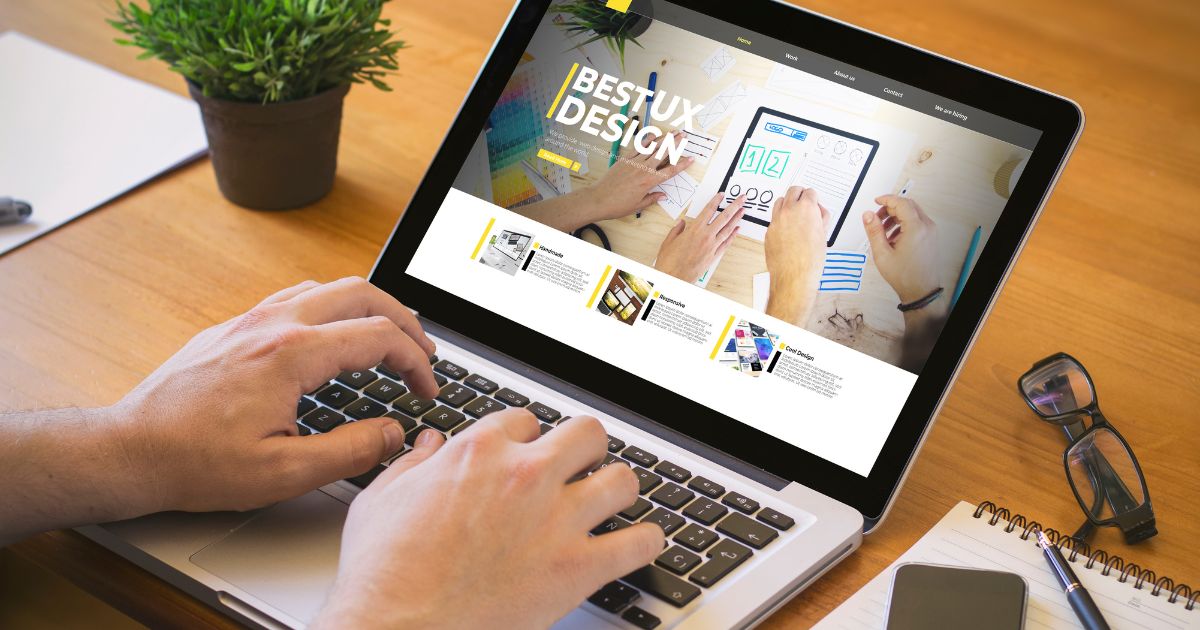
By: The LaunchPad Lab Team / September 28, 2022
When it comes to web design, understanding UX psychology is a crucial component of great design. In its simplistic definition, user psychology studies how humans use technology. As digital product designers, we need to understand how users interact with a site because it can then be used to influence their decisions through strategic design choices.
Joe Leech, the author of Psychology for Designers, once quoted, “A designer who doesn’t understand human psychologies is going to be no more successful than an architect who doesn’t understand physics”. This quote is quite impactful because it shows the importance of knowing the fundamental and base foundation of practices. Here at LaunchPad Lab, we think it’s essential for our digital product design team to be well-versed in all of these laws to provide the best solutions for our clients.
These practices have been analyzed by Jon Yablonski, author, and curator of Laws of UX. In his resource, he covers 21 UX laws and the specific categories they all fall under. Below we will take a look at those particular categories and better understand how to apply them to web design.

The term heuristic simply refers to a fast and methodical way to enable people to learn or problem solve quickly. When we apply this to web design it translates into determining the usability of a design.
Users tend to perceive aesthetically pleasing designs and websites as more usable. There’s the thought that if it looks better, it will work better even if that’s not the case.
The time it takes for a user to move their cursor to a specific area is directly related to the distance between those items as well as the size of the intended target. If the size of your target is smaller than average, it’s going to take your users longer to reach it.
As a user get closers to their goal, their behavior becomes increased to get to their goal faster. People in general are motivated by how much is left between them and reaching their intended target.
The time it takes for a user to make a decision is based on the number of choices and their complexity. The more choices you provide, the longer it’s going to take for them to reach a decision.
Users spend a majority of their time on other websites, therefore they prefer if yours works in the same manner as the ones they already know.
The number of items or objects the average person can keep in their working memory is about seven (plus or minus two). This is where the concept of chunking information is derived from so that we can obtain those sections of information.
People will continue to complete tasks if there is available time allocated for them. If you provide a user more time, then you will receive less effort from them, versus allowing for less time which increases their efficiency.

Principle laws serve as the foundation and general rules of web design and all systems related to design. They are the primary specifications to create websites that are easy to use, well organized, and visually aesthetic. Essentially they are the baseline of UX design.
A user’s productivity is derived from the speed at which an interaction takes place which should be no longer than 4/10th of a second. If it takes longer, the user won’t feel in charge which negatively affects the experience. You want to hold their attention and make them feel in charge which can be done by showing some type of response to their clicks.
As we design components and individual items, the simplest solution is always the best solution. Removing any unnecessary elements is always best practice so that the design’s efficiency doesn’t decrease.
The idea is that there are only a handful of main elements that affect the overall outcome and the majority of the other elements has little or no impact. Think of this from a design perspective: 80% of a user’s attention is spent on 20% of the web page in its entirety.
From a design perspective, we should be liberal in what we accept, but then conservative in what data we send. Forms are a great example of this law in that the design may allow you to enter your date of birth in multiple formats, but then how that data is received on the back end should just have one format. We also should anticipate and plan for as many use cases and outcomes as possible to create a resilient design.
No matter how far you reduce something down, there will always be a certain level of complexity that can’t be removed.

Gestalt is the idea that we as humans will see a whole group of objects before we see those individual parts making up the whole. When applied to design, this helps create a seamless and connected aesthetic, making the experience much better for the user. There are six common principles of Gestalt which are similarity, continuation, closure, proximity (grouping), figure/ground, and symmetry and order.
Elements that share a clearly defined area are commonly perceived into groups. When this happens, we also preemptively assume that those grouped elements share a characteristic or functionality. As designers, we can use borders and background colors to help define these areas.
When objects are placed close together, they will be seen as a group rather than individual parts. In today’s fast-paced world, websites are often scanned not read, so properly grouping elements increases usability.
As individuals, when we’re presented with complex shapes or images, our brains interpret them in the easiest way possible. This requires the least amount of cognitive effort and that should be made aware throughout the design process. Keep things simple so that your users won’t have to think more than they should.
Humans tend to group elements visually based on color, shape, size, and orientation, even if there isn’t any direct connection between them. This happens because our brains are allowing us to process a large amount of information visually at once.
Elements that are connected visually are perceived as a single entity, versus other elements that aren’t linked in that same visual manner. You can connect elements through the use of color, lines, frames, functionality, and more.

Cognitive biases are systemic ways in which individuals perceive context in relation to their judgments and decision-making processes. In its simplest term, it’s about how information is framed right from the start. As digital product designers, we need to be aware of our own biases and make sure that they aren’t predetermining any product or design decisions.
People will judge their overall experience of something based on how they felt during the most intense (key) points and the final points of their journey. Through design, we should be able to identify those main points and properly implement functionality to them to create a stress-free experience for the user. This is where if this primary process is overly difficult for the user, it’s going to frustrate them and create a negative overall experience.
Users will remember the first and last items being shown to them. This is where positioning items strategically comes into play. Take a look at a website’s home page for example. Users will often remember what was in the top section and then the bottom near the footer and forget most of what was between. By positioning your content appropriately, you can make sure that the user sees the most important information.
When a user sees similar objects, they will most likely remember the one that differs the most. When you distinguish one item specifically from a group of others, it’s more likely to be remembered because your attention is drawn to that specifically. Pricing tables are a prime example of this because often you will see the most recommended plan as the one differing from a design aesthetic.
People will most likely remember uncompleted or interrupted tasks better than those that they have completed. When designing, we should always provide a visual element to help define a clear indication of progress. This is going to in turn, help ensure that users are completing those intended tasks.
As you can see, designing an impactful website or product experience requires strategy and forward-thinking to build something that sets your customers up for success.
If you’re looking to partner with a digital product agency to elevate your digital experience, LaunchPad Lab is ready to help. Our team provides custom software and application development services to help you stand out from competitors with an amazing, one-of-a-kind digital experience. Book your free discovery call with us today to get started!
Partner with us to develop technology to grow your business.